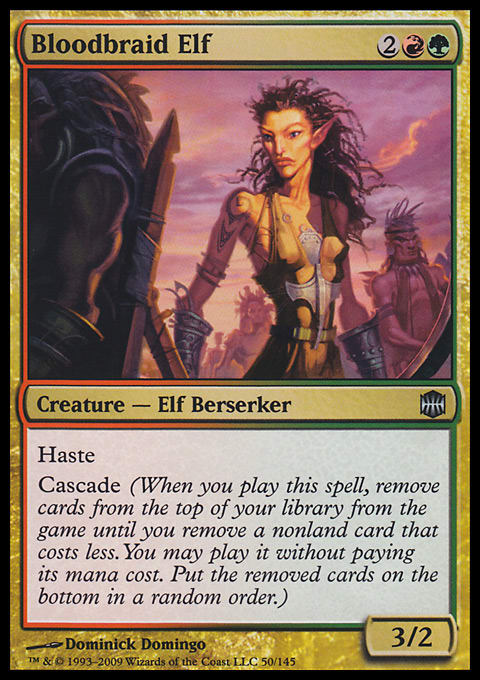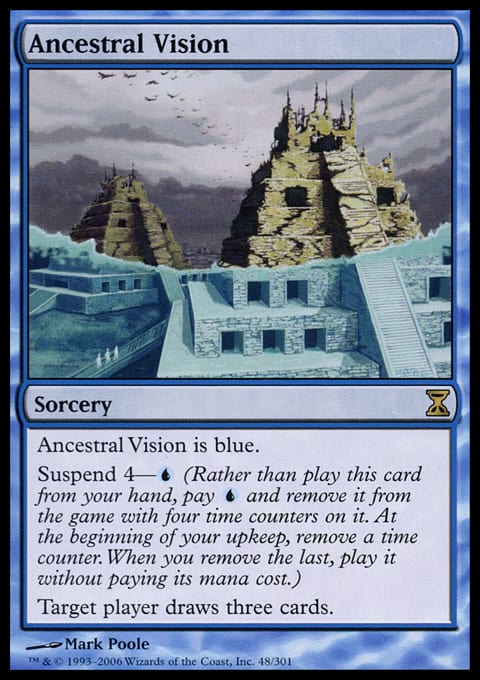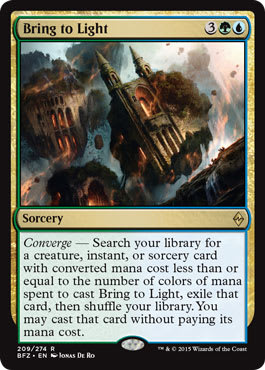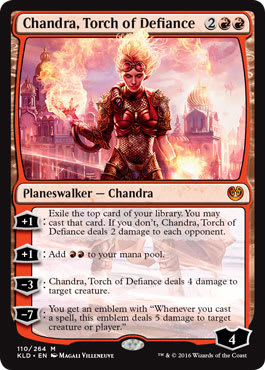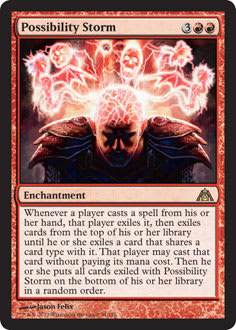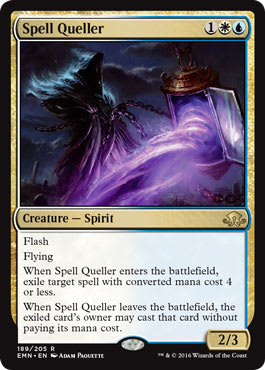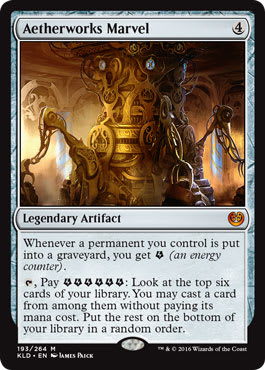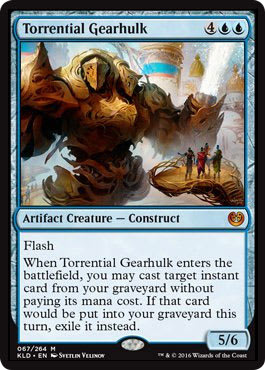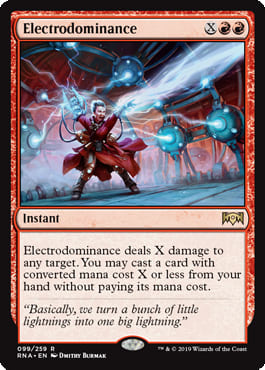As 2019 comes to a close, we can look back on one of the most wildly pushed years of Magic design the game has ever seen. 2019 provided us with a murderer's row of cards that have infiltrated all formats, leading to a number of bans as well as other problems as they run rampant. Don't believe me?
Simic Urza | Modern | Stephen Dykman SCG Invitational 6th Place
- Creatures (12)
- 4 Emry, Lurker of the Loch
- 4 Gilded Goose
- 4 Urza, Lord High Artificer
- Planeswalkers (7)
- 3 Karn, the Great Creator
- 4 Oko, Thief of Crowns
- Instants (5)
- 2 Metallic Rebuke
- 3 Cryptic Command
- Artifacts (17)
- 1 Aether Spellbomb
- 1 Everflowing Chalice
- 3 Engineered Explosives
- 4 Arcum's Astrolabe
- 4 Mishra's Bauble
- 4 Mox Opal
Simic Urza is the de facto "best deck" in Modern right now. 23 of the 41 maindeck non-land cards in Simic Urza were printed in 2019.
That's over half!
Modern goes all the way back to 2003's Mirrodin, meaning that even given 16 years of Magic history and the 60 sets that comprise Modern before 2019, that's still not enough to overcome 2019 Magic cards. We've even got a few Mystic Sanctuary as well as some sideboard cards to bump the numbers up even more. Furthermore, every single threat in the deck was also printed in 2019. 2019 goes even deeper than this though.
Bant Snow Control | Legacy | Marc Eric Vogt, Grand Prix Bologna 2nd Place
- Creatures (5)
- 2 Ice-Fang Coatl
- 3 Snapcaster Mage
- Planeswalkers (6)
- 1 Teferi, Time Raveler
- 2 Jace, the Mind Sculptor
- 3 Oko, Thief of Crowns
- Instants (17)
- 1 Counterspell
- 2 Force of Negation
- 2 Veil of Summer
- 4 Brainstorm
- 4 Force of Will
- 4 Swords to Plowshares
- Sorceries (8)
- 1 Entreat the Angels
- 3 Terminus
- 4 Ponder
- Artifacts (4)
- 4 Arcum's Astrolabe
Legacy encompasses almost all of Magic's rich quarter century history, banning only the truly ridiculous cards restricted in Vintage like the Power Nine and other outliers. And how does 2019 Magic fare against literally the entire history of the game? 14 of 40 maindeck spells. This is insane. Throw in a few more Mystic Sanctuary and some sideboard cards again and it's not hard to see the impact that 2019 has had on Magic as a whole.
So why has this happened?
The reality is that Wizards of the Coast just turned the power level dial to eleven over and over again. None of the 2019 cards are broken in the same way that Dread Return, Skullclamp, Blazing Shoal, or Splinter Twin are broken. They don't win the game instantly, they don't enable some stupid combo, they don't fundamentally break the game; they are just so pushed on rate that they end up significantly better than the other available options.
Now if Magic was Starcraft 2 or another digital game, the easy answer to something being overpowered is to simply apply a nerf. When Zerg Infestor play was dominating the late game in major tournaments over and over again, Blizzard made the choice to nerf it by removing an ability and limiting how another one of its abilities worked in an attempt to make it more balanced. A balance update example:
- Can no longer cast Fungal Growth while burrowed.
- Fungal Growth radius reduced from 2.5 to 2.25.
- Infested Terran cast range reduced from 9 to 7.
This is the benefit of digital games - you can simply edit the game pieces on the fly to help balance them as real world gamers adapt to and learn how to use them in the most devastating ways possible. You can't play-test every possible angle, so patches are the solution.
Of course, this isn't possible in Magic. While it would be possible on both MTG Arena and Magic Online, the majority of Magic is in the printed game and Wizards of the Coast is not going to be physically reprinting erratad cards for everyone who already owns Oko, Thief of Crowns.
However, I thought it would be fun to do it anyway!
If nothing else, trying to fix all of 2019's various design mistakes helps us to understand what it is about each card that makes it so good, while also maybe helping to avoid the mistakes in the future. It also helps to identify what is it about each card that makes it irritating to play against. Besides, who doesn't want to smear red marker all over Teferi, Time Raveler and Oko, Thief of Crowns?
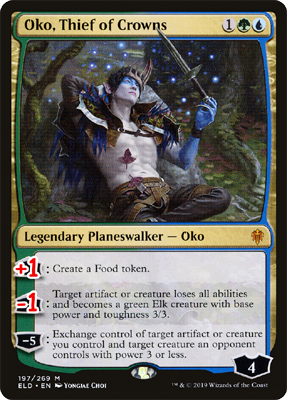
Let's start with everyone's favorite shirtless planeswalker (sorry Jace).
Oko, Thief of Crowns feels mostly like a numbers problem. "Good food enabler" and "give Simic a way to disrupt creatures as well as make creatures" both feel like good, fun design goals. Making food helps make the other food cards good, while making threats and interacting with your opponent's board give Oko a nice level of versatility.
The problem is that Oko gets so big, so early in the game that he is incredibly hard to deal with. This is further escalated by Rapid Hybridization effect coming alongside a benefit rather than at a cost. Giving your opponent a 3/3 isn't fantastic, but if that 3/3 can't even profitably attack an undefended Oko the next turn there is very little opportunity cost.
The other problem with having the Rapid Hybridization effect on a plus ability is that it ends up being used over and over again with no limiter. Every single good creature or artifact your opponent plays for the rest of the game is now going to be a faceless 3/3, which not only discourages players from playing cool cards but also creates incredibly stale game states of a bunch of 3/3 elks staring each other down. Making the Rapid Hybridization a cost and lessoning Oko's ability to accumulate absurd amounts of loyalty helps to solve this.
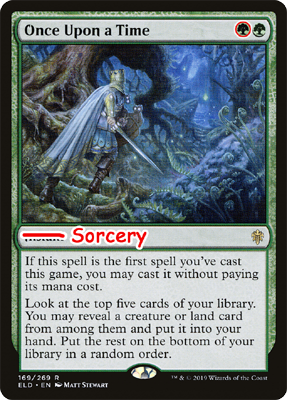
It's very possible that Once Upon a Time just shouldn't exist as a Magic card. Free spells are so often a problem that avoiding them entirely may be the correct course of action. However if you really wanted to fix Once Upon a Time while still maintaining its functionality, the opportunity cost (the risk when it doesn't work the way you want it to) needs to be much higher. At its best, Once Upon a Time is a free super cantrip that helps you find your best play on the most important turns of the game. At its worst, Once Upon a Time is about on par with Impulse. This is not okay.
Balancing Once Upon a Time means making it much more troublesome to cast. Making it a sorcery makes it much less nimble, while making it cost two Green mana means you can't just splash it without a serious commitment to Green. It's very possible that this version is still too stupid to see print, but at least there is some risk associated with playing the card now rather than just being a freeroll.
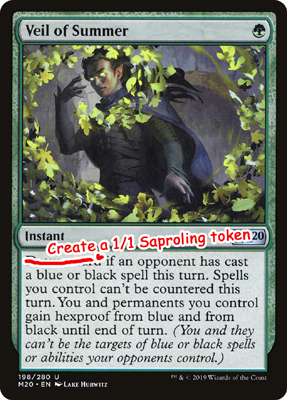
It's easy to see what Wizards of the Coast was trying to do with Veil of Summer. Cards like Autumn's Veil, Mold Adder, Karplusan Strider, and Display of Dominance have always been the most embarrassing part of each of their respective color hoser cycles, which often include wildly influential sideboard cards like Celestial Purge, Flashfreeze, Deathmark, Rending Volley, and more. So Wizards of the Coast wanted to make damn sure that Veil of Summer saw play and turned the dial a little too far. The problem is that a one mana two for one is just not a reasonable thing to print.
Veil of Summer exists in the awkward world between one and two mana, where at one mana it is utterly broken but at two mana it's barely playable. A reactive card meant to answer your opponent's spells needs to be cheap to be played, but the clean one mana two for one is just too good. As such, rather than try to up the cost I've kept it at one mana but changed the benefit from a card to a small creature. By making it produce something that could be construed as threatening rather than just another card, it makes it better in decks trying to protect their actual threats rather than counterspells decks just looking for a one mana Cryptic Command.
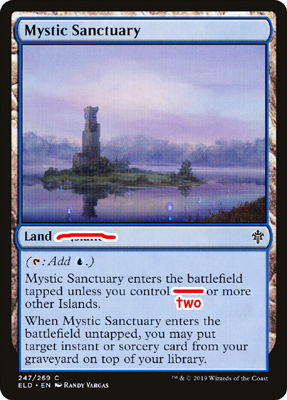
Fetchlands are stupid. There are few good reasons to make them even more stupid than they already are. This land cycle from Throne of Eldraine was mostly cute, but giving every Blue deck in Eternal formats the ability to turn their fetchland into a pseudo Snapcaster Mage is just too much, not only from a power level standpoint but also from a repetitive gameplay standpoint.
While changing Mystic Sanctuary would end up changing the whole cycle, it's not like anyone is going to be crying that their Gingerbread Cabins aren't as good anymore. By limiting the need to work to only two lands of a type it may actually be an improvement that isn't annoying in older formats with fetchlands.
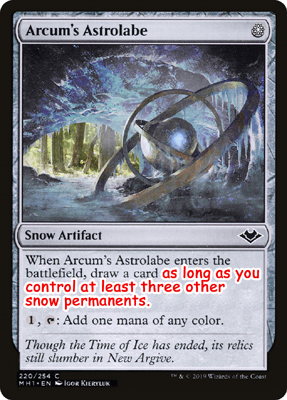
It just looks so innocent doesn't it!
Like Veil of Summer, Arcum's Astrolabe suffers from the 1.5 mana problem. At one mana, as we have seen, Arcum's Astrolabe is a fairly broken enabler that has transcended all formats it is legal in. At two mana, it is Prophetic Prism and is borderline playable (although to be fair Prophetic Prism effects have done well at multiple points). There really isn't a middle ground. The fact is that if Arcum's Astrolabe was literally just a one mana artifact that did nothing and drew a card when it came into play, it would see a large amount of play because of how much synergy that provides. But if you remove the card draw, it becomes the unplayable Mana Cylix.
My solution was to dull it in the early game while maintaining the card draw at a higher cost. In the early game it can still fix your mana and be a cheap artifact if you need it, but the opportunity cost is there as you're very unlikely to draw a card early. It also produces some interesting gameplay choices. Do you cast it now for the artifact, or try and draw a card later?
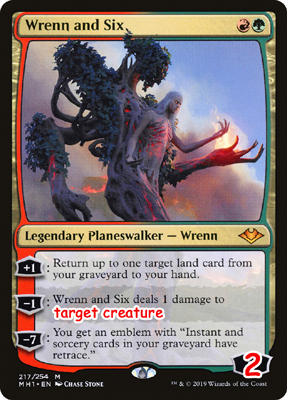
Like Oko, Thief of Crowns, Wrenn and Six, is actually a really cool design. It's a planeswalker that isn't just generically good at things and requires some deck-building finesse, alongside the novelty of being a two mana planeswalker. Also like Oko, the numbers are just too large for an early planeswalker. A turn two Wrenn and Six is just too hard to kill without dedicated planeswalker removal, starting a snowballing advantage from as early as turn one.
By knocking the starting loyalty down to two there is now more of a risk of running out Wrenn and Six on turn two as he can die to Lightning Bolt and attacks easier, and can now no longer kill two one-toughness creatures and live to tell the tale. We've also weakened his minus one ability a little bit because of how good it is.
It's possible Wrenn and Six will always be too good in a world of fetchlands and especially Wasteland, but this version is much more manageable.
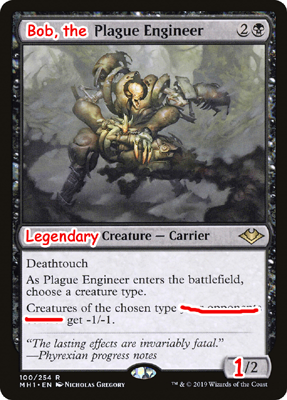
While not as omnipresent as some of the other cards today, Plague Engineer is one of the most egregious designs of 2019. Making hate cards for infinite combo decks or punishing control decks makes sense; those decks are often the ones that are most powerful and miserable to play against. But why are we discouraging tribal decks with a maindeckable-rate card that makes playing them almost impossible? Tribal decks are usually just good, honest Magic with creatures and interaction that is "Magic" in the purest sense.
Plague Engineer is far too good on rate to be reasonable, as no card this good against certain decks should be a maindeckable card in your average metagame. We've toned the card down a notch by making the effect symmetrical and making it so you can't have two in play to completely lock your opponent out. However, if the goal of this card was just to provide a good answer to True-Name Nemesis, Mother of Runes, and other annoying small creatures, you could also template it to say "As Plague Engineer enters the battlefield, choose a card name. Cards with that name get -1/-1" to fulfill that purpose. And most importantly leave my damn goblins alone!
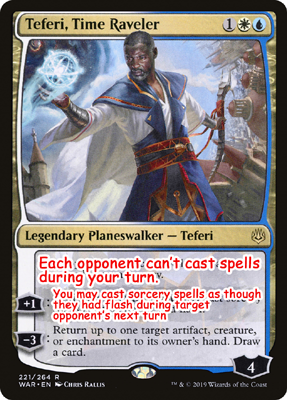
The most difficult for last. Teferi, Time Raveler is tough because it's an already amazing card that becomes exceedingly obnoxious because of how favorable it interacts against so many cards because of timing issues.
The list could go on basically forever, but nothing feels worse than Teferi doing much more than it was intended to. It seems clear that Teferi was designed to turn off your opponent's ability to interact during your turn and be great against counterspells, but when it does so much more incidentally it feels awful.
This new version tries to maintain some semblance of symmetry while avoiding most of the rules headaches the previous template caused. Almost everything on the above list now works once again under this new template, while you still get to have your turns unfettered by your opponent. However it also does allow your opponent to use their counterspells and combat tricks, they just have to do them on their turn. We've also mirrored the minus one ability to be somewhat of the opposite, allowing you to only cast your sorcery spells at instant speed on their turn. A minor change but, makes both abilities feel connected.
This Teferi is still 95% of what it was, but with less feel bad moments, both from rules snags as well as still having some chance to use your counterspells at tricks in a limited fashion. Teferi ends up feeling less like a prison and more like a very good Magic card.
Wrapping Up
The main point of this article is designing Magic cards to be powerful, fun, and balanced is extremely difficult. I've had the benefit of months and months of play across all formats and huge amounts of hindsight and discussion that Wizards of the Coast did not have when they had to go to press, and I'm still not confident these new versions are fair or fun.
The concept of actually "patching" or errataing cards to fix them is also one that probably demands an entire article to cover all the nuances of, but with Magic going so far into the digital age maybe something like it could be tried on MTG Arena. It is certainly dangerous territory though.
All and all though, while it may sound odd it is good when Wizards of the Coast makes mistakes. It means they aren't afraid to take risks and push boundaries, which is important to keep a 25 year old game fresh.
Let's just take it a bit easy on the planeswalkers in the future though, okay?













